by Martin Green
Some car brands are so quintessentially English that they can only be developed in the United Kingdom.
It must be the soil or the people (entrepreneurs and clients alike), which make the most extraordinary cars that can be dreamed up and built happen – and get enough of a following to sustain the brand.
It is also typically British that most of these brands don’t fare well after a while, especially when the original owner moves or passes on.
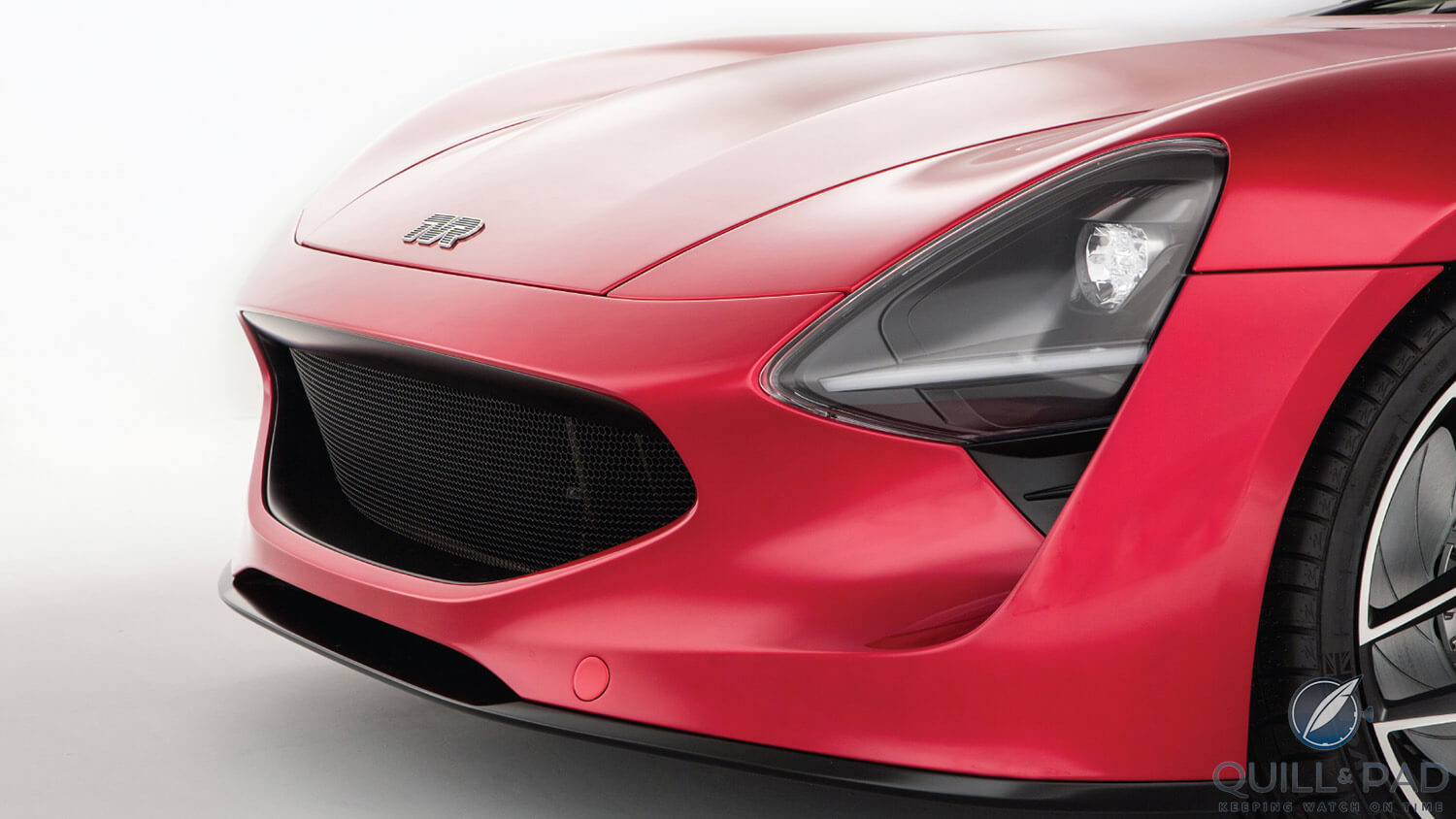
Front of the 2018 TVR Griffith
What goes up must come down, and vice versa
TVR is a prime example of this.
The iconic, and at times chaotic, brand began life just after World War II when Trevor Wilkinson decided to build a car in his automotive workshop, which he established in Blackpool.
After some trial and error, the small company developed a tubular chassis fitted with a light body, a powerful engine, and rear-wheel drive: a concept that would define TVR.
Although the company created some beautiful cars, even entering the U.S. market, financial trouble was always around the corner, and TVR went through several changes in ownership before Peter Wheeler took control of the company in the 1980s.
Under Wheeler, some of the best known TVRs saw the light of day, including the Griffith, Cerbera, and Chimaera models. These were beautiful yet brutal machines that were not for the faint of heart.
Or, as Jeremy Clarkson put so fittingly, “Owning a TVR in the past was like owning a bear, I mean it was great until it pulled your head off, which it would. One day, it would pull your head off. ”
Of course, that is exactly the appeal of owning a TVR: it is very beautiful standing still, but a man-versus-machine fight to drive. There was a time when all sports cars were pretty much like this, but today’s world demands enormous horsepower controlled by sophisticated electronic safety and support systems, and TVR couldn’t or wouldn’t keep up.
In 2004, Wheeler sold TVR to Russian oligarch Nikolay Smolensky.
While it’s generally no surprise if/when niche British sports car brands self-destruct, Smolensky hurried the process along at lightning speed.
In less than two years the company was in ruin, and despite a lot of rumors of new cars and different production facilities, very little happened.
Until 2013, when Smolensky passed the ownership of TVR to a syndicate headed by Les Edgar. This is another thing about the British car industry: after the decline, there is usually somebody who sees the potential in the brand and gives it another go.
From the start Edgar has appeared to be a more sensible steward of the brand, first ensuring part supply for classic TVRs. A clever move, because that not only showed his commitment to the heritage of the brand, but also secured the support of the many passionate TVR enthusiasts who had become distraught during Smolensky’s leadership.
This also set the stage to launch a new TVR, and even here Edgar has not disappointed.
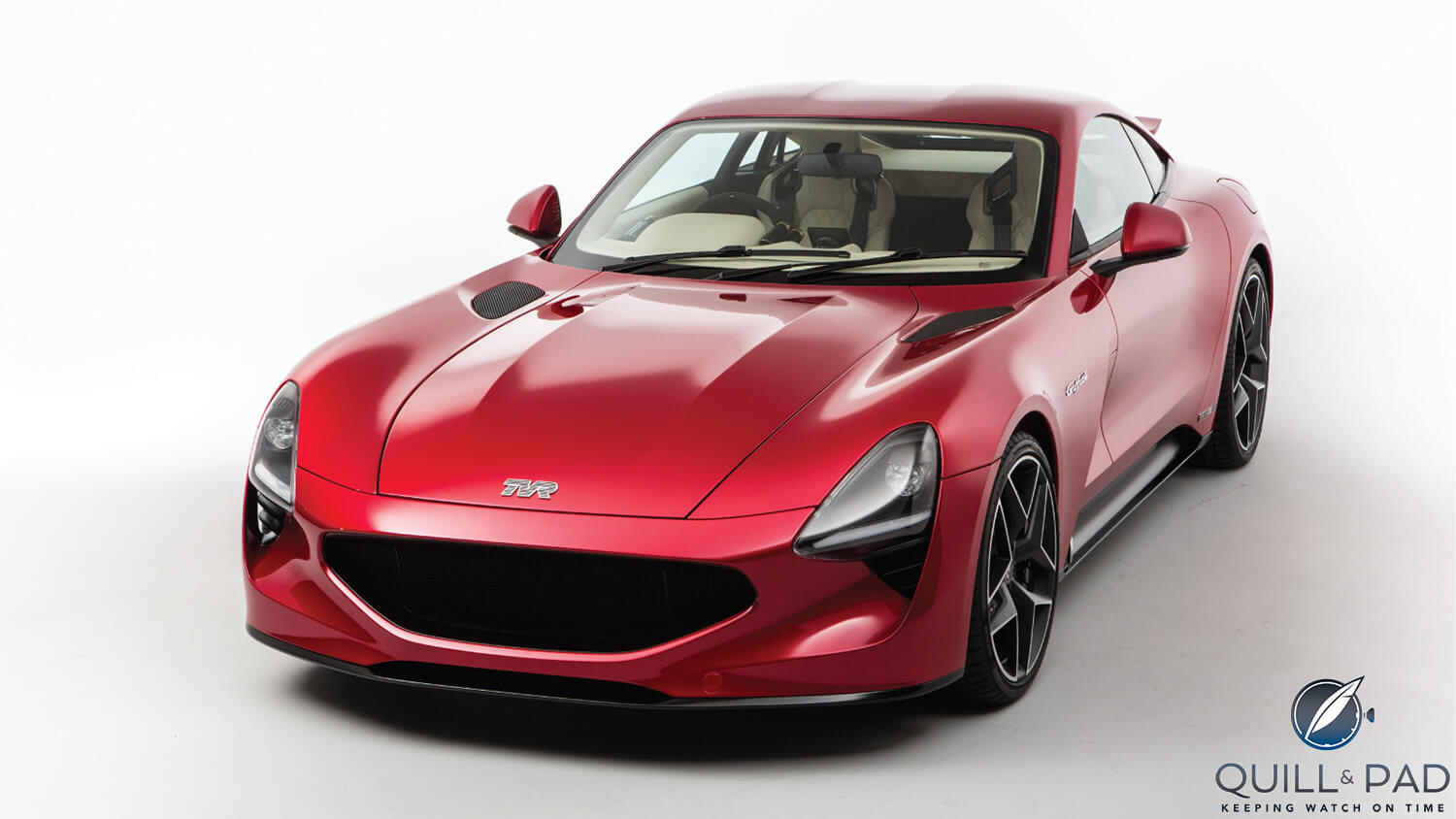
TVR’s 2018 Griffith
For the design, he enlisted the company of Gordon Murray, the man not only responsible for many Formula One cars by Brabham and McLaren, but also the one who penned the lines of the McLaren F1 road car.
But a great design needs a potent engine, and for that TVR teamed up with Cosworth, bringing together all the ingredients for what might be one of the most promising cars since the Alfa Romeo 4C.
A red-blooded, thoroughbred TVR: the Griffith
The new TVR, which has been given the historical name Griffith, cannot be mistaken for anything but a TVR.
It takes some cues from the models of the Wheeler era, yet Murray puts a contemporary spin on it.
The same can be said for the interior, as TVRs have always had a reputation for having something of a quirky interior design. Ergonomically perhaps not always the most convenient setup, it is part of the charm of the brand, which Murray has all too well realized.
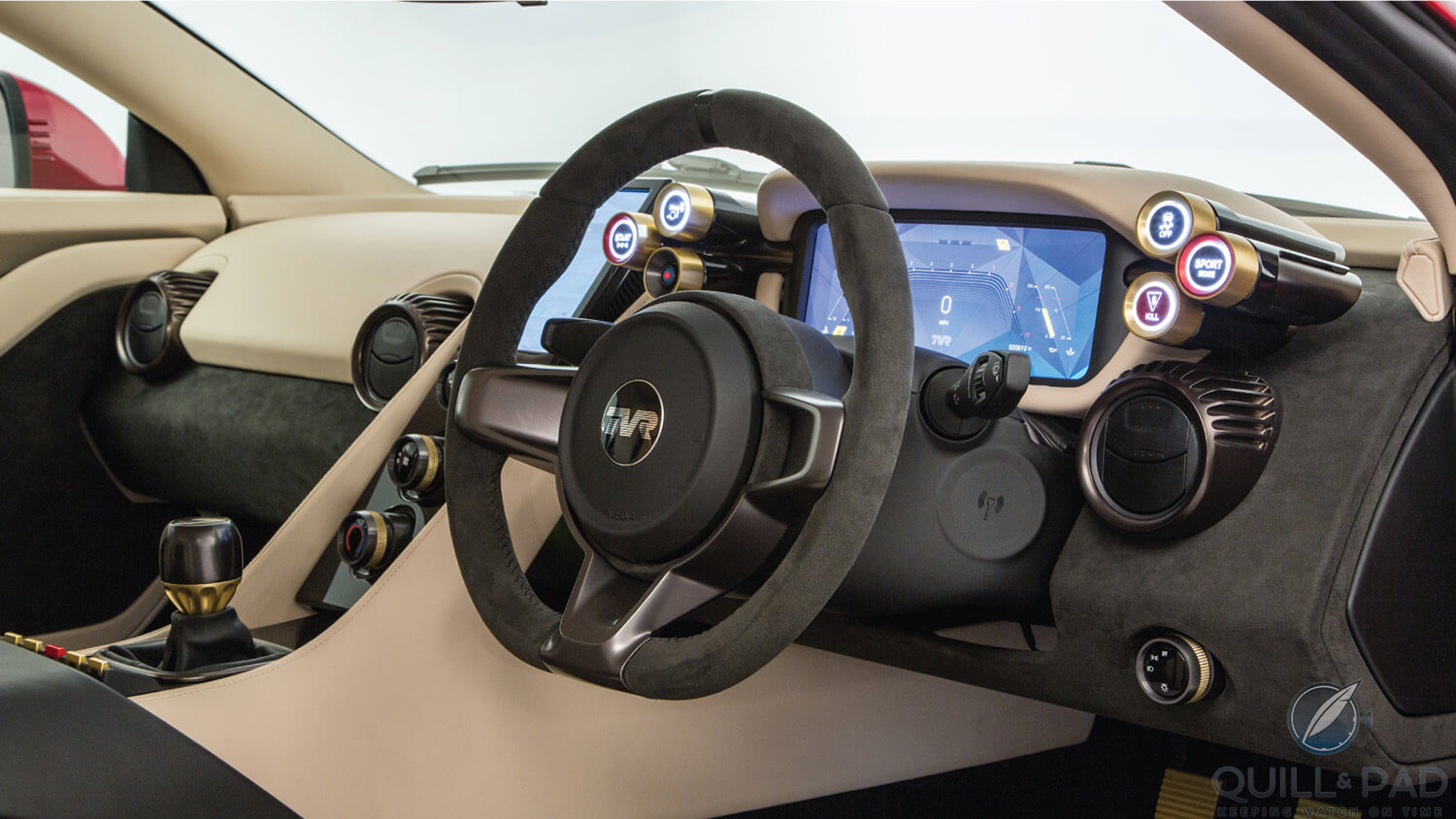
Dashboard of the 2018 TVR Griffith
What is also part of the charm of the brand is the setup.
Cosworth supplied TVR with a 5.0-liter V8 we already know from the Ford Mustang GT, customizing the clutch, flywheel, and engine control unit for the Griffith, which puts out 480 bhp.
This is more than ample power for a car with a curb weight between 1,200 and 1,250 kg. Where most sports car brands would opt for automatic transmission to achieve optimum sprint times, TVR took a six-speed manual gearbox from Tremec.
Thus, it depends a great deal on the driver how fast the Griffith can go from zero to 60, and that by itself adds a lot of emotion to the car. While the Griffith is equipped with ABS and ESP, the driving experience should be very pure, and also sound pure, as the exhaust ends before the front of the doors, because of which they are fitted with NASA-spec heat shielding.
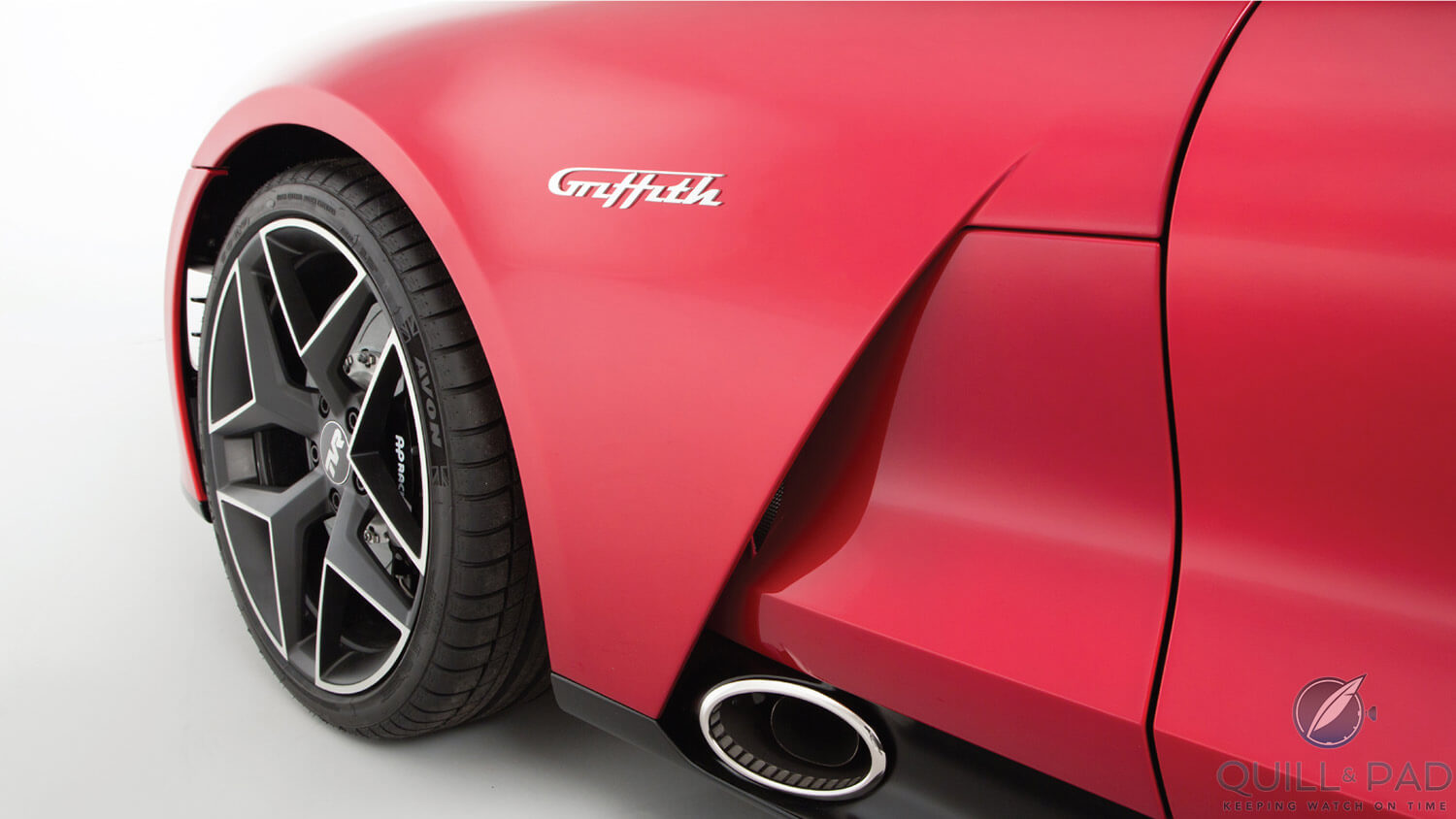
Massive forward exhaust on the 2018 TVR Griffith
The Griffith was very well received, and allegedly already 600 people have placed a £5,000 deposit to secure their own limited edition models priced around £90,000.
A need for speed – and for Rebellion
While this is all very promising, Edgar’s dreams don’t stop there: he also wants to turn TVR into a capable competitor on the world’s race tracks.
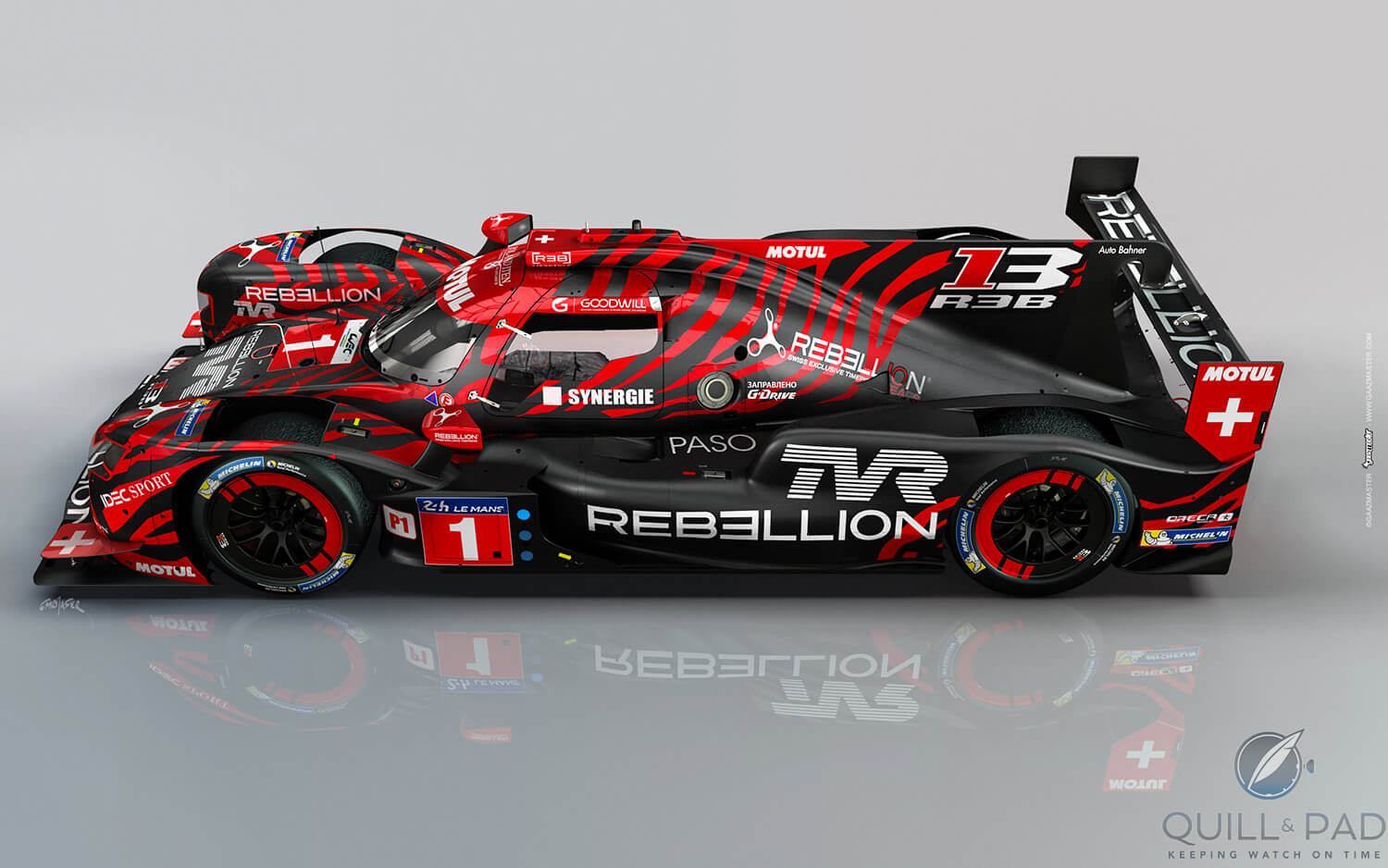
Rebellion Racing R13
To this end, it was just announced that TVR will serve as the automotive partner of Swiss team Rebellion Racing for the 2018 World Endurance Championship (WEC).
While this is initially a sponsorship deal with Rebellion Racing, it can be seen as the first step toward getting TVR back into the rhythm of racing, soon to be followed by its own entry in the GT category, as Edgar has made no secret out of his desire to return TVR to Le Mans.
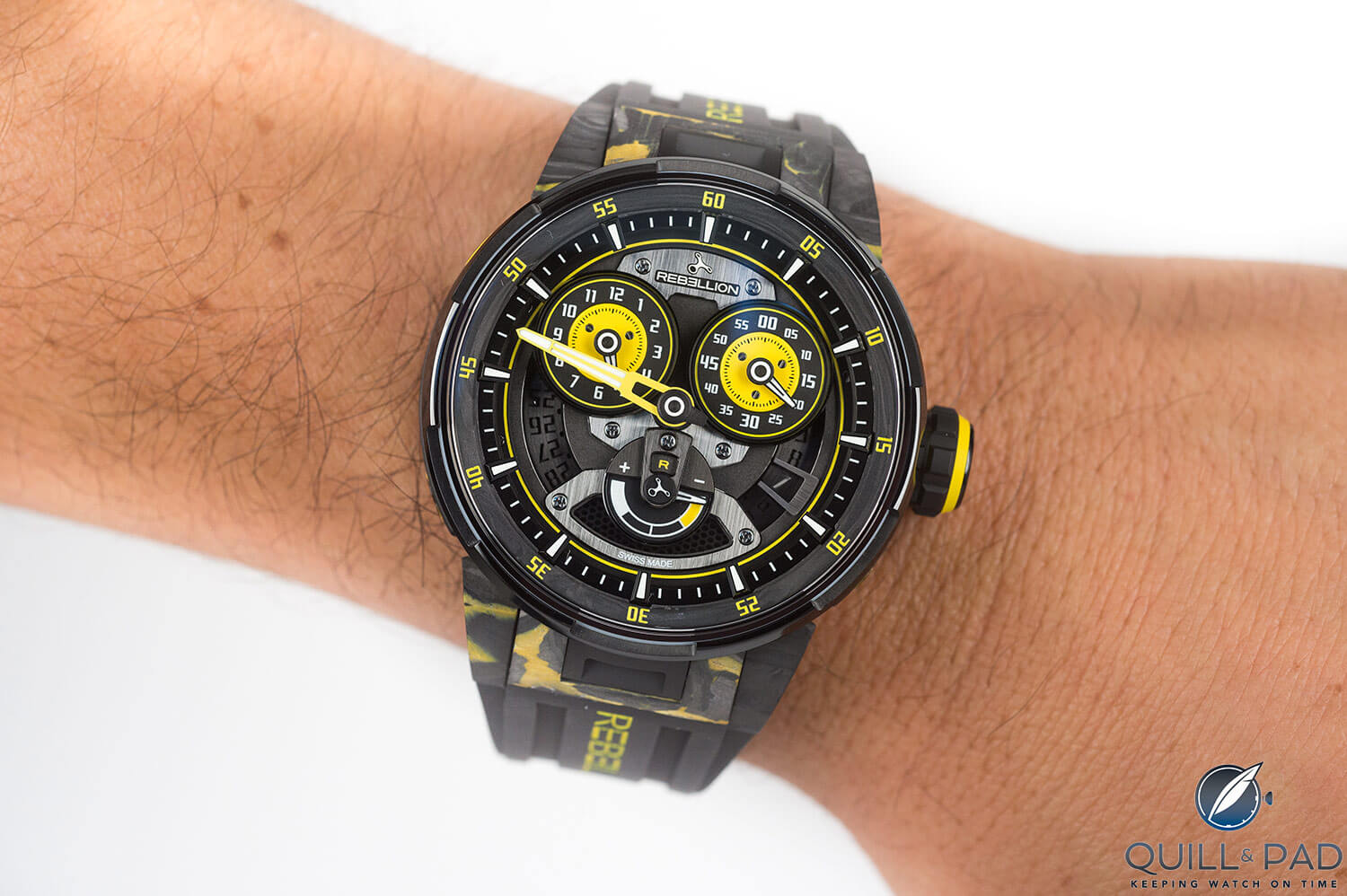
Rebellion, of course is also a watch brand: here is the unique piece Predator 2.0 Regulator Power Reserve Sébastien Buemi Edition for Only Watch from 2017
We know Rebellion in the watch world as a brand that makes, may I say, brutal, high-performance watches. Given that there is now a potential client base of already 600 people thanks to TVR’s pre-orders, we hope that the sponsorship deal also includes a nice limited edition in TVR style to celebrate the new Griffith.
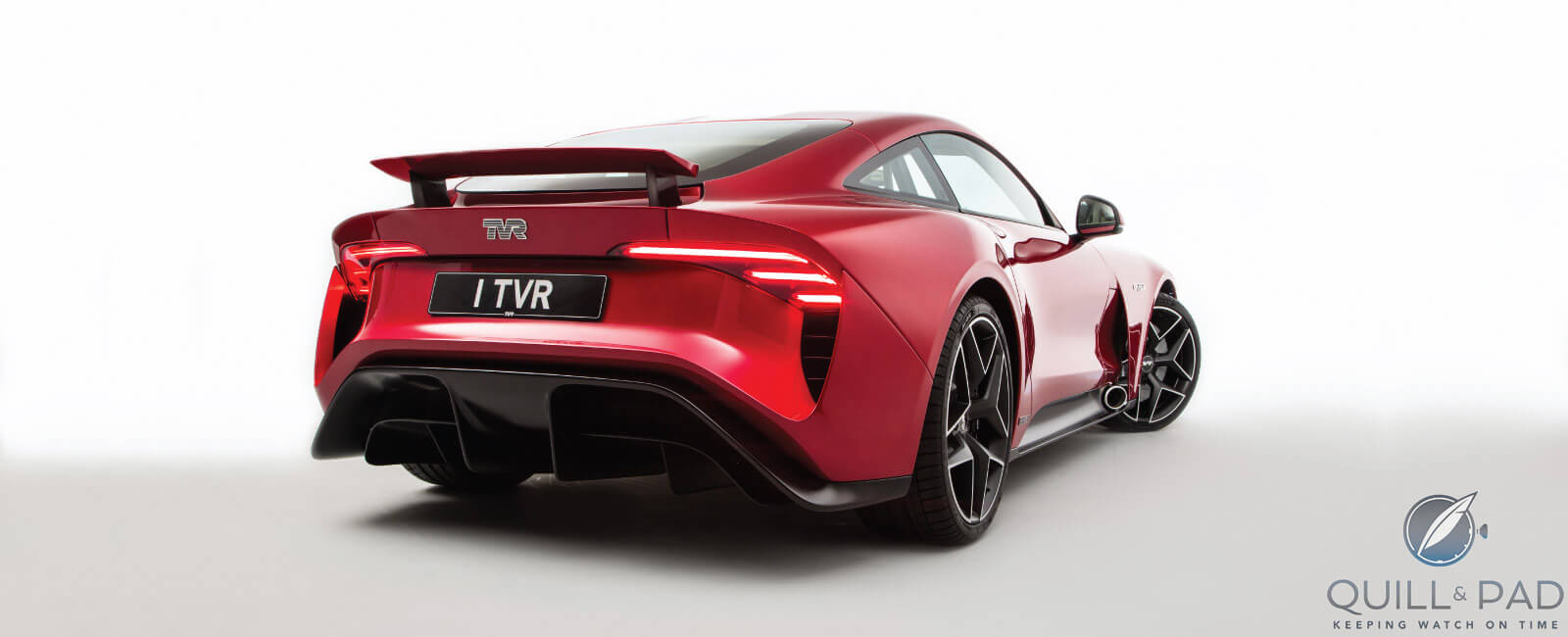
Back of the 2018 TVR Griffith
I will be more than happy to test drive it, preferably in combination with the Griffith, that is!
For more information, please visit www.tvr.co.uk.
Quick Facts TVR Griffith
Engine: 5.0 liter V8
Power: expected 480 bhp
Transmission: 6-speed manual
Acceleration: TBD
Top speed: expected 300 kph
Base price: expected around £90,000
Leave a Reply
Want to join the discussion?Feel free to contribute!





















































several changes of ownership.. before peter Wheeler.. is just wrong.. Trevor (founder) . sold to Lilley, who sold to Wheeler
https://en.wikipedia.org/wiki/TVR
Thanks for your comment Barry, but unfortunately the history of TVR in regards to its ownership is rather complicated. I didn’t want to focus on it too much, hence the “several changes of ownership” and the focus of the article was the new TVR, plus Motor Car already wrote a comprehensive article on the history of TVR and its various owners which you can find here: https://motor-car.net/tvr/item/10697-tvr-history
Yes. The financial/company history is complicated. Just that it was largely three long term owners vision